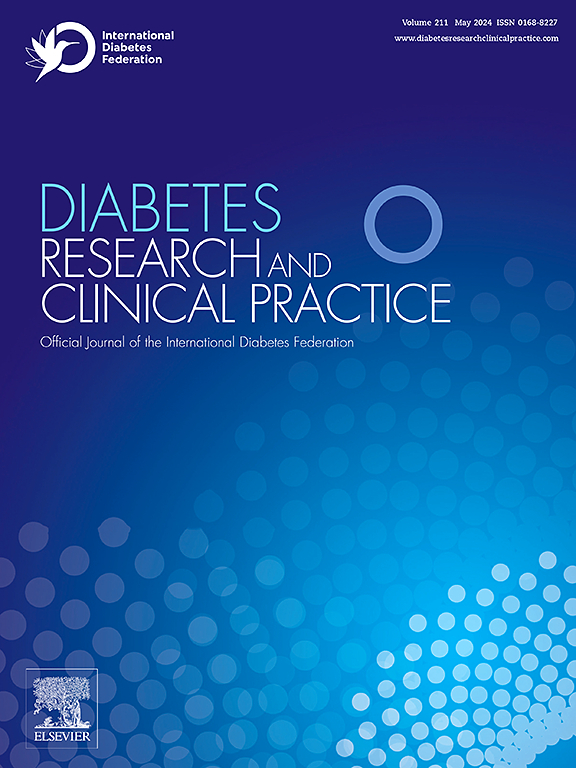Revisiting the benefits vs risk profile of sodium-glucose co-transporter inhibitor use in type 1 diabetes. Part B: Risks of sodium-glucose co-transporter inhibitor use in type 1 diabetes and ketoacidosis risk mitigation strategies
IF 6.1
3区 医学
Q1 ENDOCRINOLOGY & METABOLISM
引用次数: 0
Abstract
Sodium-glucose co-transporter (SGLT) inhibitors have been evaluated for use in people with type 1 diabetes (T1D). Despite evidence for glycaemic and non-glycaemic benefits in people with T1D as discussed in the accompanying review (Part A), the increased risk of diabetic ketoacidosis (DKA) with this class of medication remains a barrier limiting its widespread use in this population. DKA is a serious and life-threatening complication of diabetes and the excess risk associated with SGLT inhibitor use needs to be addressed before this medication could be considered as part of glycaemia and complications management in people with T1D. Understanding factors that increase DKA risk in the setting of SGLT inhibitors, as well as an appreciation of general DKA risk factors, may facilitate the development of strategies that allow for an acceptable risk versus benefit ratio to permit the use of SGLT inhibitors in people with T1D.
重新审视钠-葡萄糖共转运蛋白抑制剂在1型糖尿病中的益处与风险B部分:钠-葡萄糖共转运蛋白抑制剂用于1型糖尿病的风险和酮症酸中毒风险缓解策略。
钠-葡萄糖共转运体(SGLT)抑制剂已被评估用于1型糖尿病(T1D)患者。尽管有证据表明T1D患者在降糖和非降糖方面有益处(A部分),但这类药物增加的糖尿病酮症酸中毒(DKA)风险仍然是限制其在该人群中广泛使用的障碍。DKA是一种严重且危及生命的糖尿病并发症,在将SGLT抑制剂作为T1D患者血糖和并发症管理的一部分之前,需要解决与SGLT抑制剂使用相关的过度风险。了解在使用SGLT抑制剂的情况下增加DKA风险的因素,以及对一般DKA风险因素的认识,可能有助于制定策略,允许在T1D患者中使用SGLT抑制剂,从而获得可接受的风险与收益比。
本文章由计算机程序翻译,如有差异,请以英文原文为准。
求助全文
约1分钟内获得全文
求助全文
来源期刊

Diabetes research and clinical practice
医学-内分泌学与代谢
CiteScore
10.30
自引率
3.90%
发文量
862
审稿时长
32 days
期刊介绍:
Diabetes Research and Clinical Practice is an international journal for health-care providers and clinically oriented researchers that publishes high-quality original research articles and expert reviews in diabetes and related areas. The role of the journal is to provide a venue for dissemination of knowledge and discussion of topics related to diabetes clinical research and patient care. Topics of focus include translational science, genetics, immunology, nutrition, psychosocial research, epidemiology, prevention, socio-economic research, complications, new treatments, technologies and therapy.
 求助内容:
求助内容: 应助结果提醒方式:
应助结果提醒方式:


